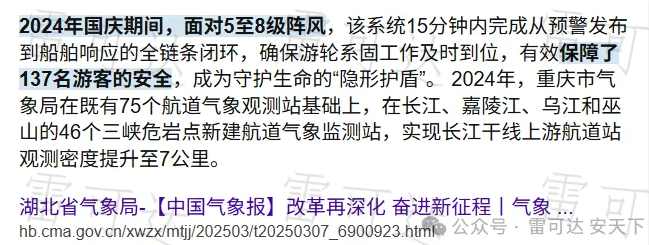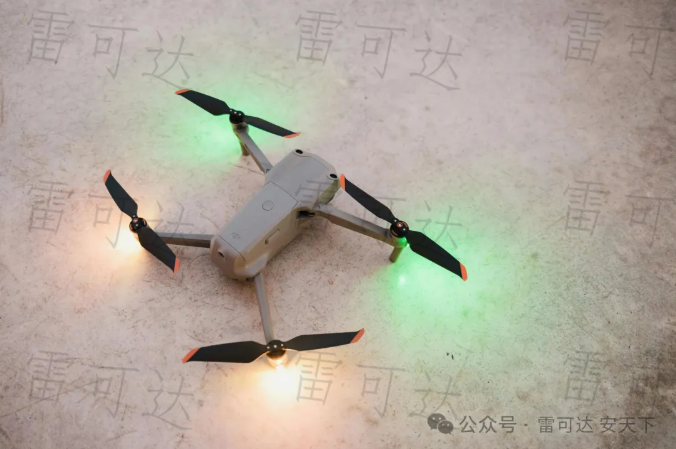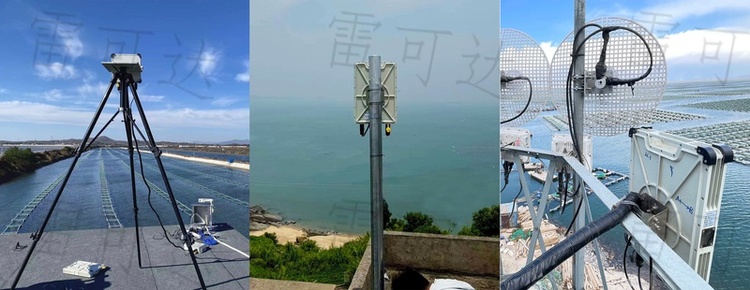Amid the rapid development of the global ocean economy, coastal security radar has transcended its traditional military applications to become the “intelligent eye” safeguarding marine ecosystems and ensuring public safety. By integrating cutting-edge technologies such as high-frequency surface wave radar, phased array, and synthetic aperture, these systems are widely used in maritime supervision, environmental monitoring, fishery resource protection, and other fields, thanks to their all-weather capability, high precision, and extensive coverage. They are gradually building a comprehensive and intelligent modern marine governance system.
Building a “Multi-Dimensional Defense Line” for Public Safety

As a golden waterway connecting the east and west, the Yangtze River channel is also prone to meteorological disasters such as heavy rain and dense fog. In the Chongqing section, meteorological authorities have intensified the deployment of 75 weather observation stations in key areas, equipped with next-generation weather radar and X-band phased array weather radar, achieving high-density network coverage with station intervals of no more than 10 kilometers.
For instance, during the National Day holiday in 2024, faced with strong winds of force 5-8, the radar system completed the entire process—from issuing warnings to emergency response for vessels—in just 15 minutes. It assisted a cruise ship in swiftly completing mooring operations, ensuring the safety of 137 tourists and serving as an “invisible shield” during critical moments.

The typhoon warning system employing “radar monitoring + meteorological modeling” on Weizhou Island in Beihai, Guangxi, initiated an emergency response 48 hours before Typhoon Wipha made landfall in 2025, safely evacuating 27,000 tourists within 24 hours. This system reduced disaster response time to under 15 minutes, significantly enhancing safety prevention and emergency response capabilities in coastal tourist areas.
Digital Law Enforcement: Precision Strikes and Efficient Supervision

In October 2024, to address the challenge of supervising unregistered speedboats with a radar cross-section of only 0.1m², Lianyungang City launched the “Comprehensive Fishery Management Platform.” Within two months, five radar systems, 11 electro-optical devices, and one unmanned aerial vehicle (UAV) base station were deployed. Leveraging high-frequency surface wave radar technology, the system突破了 traditional line-of-sight limitations, enabling the detection of moving targets over one meter in height and maintaining over 95% identification accuracy even in heavy rain.
The system provided over 40 actionable leads in 2024, assisting in solving 20 cases. By 2025, lead processing efficiency improved by 50%, achieving a closed loop of digital law enforcement: “data profiling—scientific analysis—precision strikes.”
In Cangnan, Wenzhou, Zhejiang, radar and high-altitude video surveillance work in synergy to provide 24/7, gap-free coverage across 2,740 square kilometers of sea area. With only 33 law enforcement officers, supervision efficiency equals that of a 300-person team under traditional models, greatly enhancing the utilization efficiency of maritime law enforcement resources.

In anti-smuggling operations, the collaboration between radar and UAVs has been particularly outstanding. The Guangdong Coast Guard utilizes the high-speed scanning capability of phased array radar to establish a 50-kilometer-radius three-dimensional early warning circle in the Pearl River Estuary. In 2024, through an efficient closed-loop process of “radar lock—UAV verification—speedboat interception,” 127 smuggling cases were cracked, with the total value involved exceeding 300 million yuan, marking a tactical shift from “searching for a needle in a haystack” to precision strikes.
Multi-Scenario Applications: Technology Empowering Maritime Security

Taking the XW/SR237 series of coastal security radar, independently developed by Wuhan Lakeda, as an example, this equipment can flexibly select monitoring ranges such as 1.2km, 3km, 5km, and 8km based on actual scenarios. With its high refresh rate, it consistently and stably tracks high-speed moving targets like “Da Fei” (modified high-speed smuggling boats) and stealth speedboats.
Its typical application scenarios include:
- Critical infrastructure protection: such as substations, detention centers, and oil pipelines;
- Perimeter security: such as areas around airports and along railways.
Conclusion: Expanding from Military to Civilian Use, Driving the Intelligent Transformation of Maritime Management
From preventing illegal border crossings and enforcing anti-smuggling laws to maritime emergency rescue, coastal security radar is becoming an “invisible defense line” safeguarding national maritime rights and interests and coastal security. It enables 24/7, uninterrupted monitoring of key sea areas,实时 identifying abnormal vessels and behaviors, while simultaneously推送 data to multiple departments such as border defense, coast guard, and maritime authorities, establishing an efficient and interconnected collaborative response mechanism.
Whether in the intelligent调度 of the Yangtze River channel or coastal typhoon warnings and emergency responses, coastal security radar is profoundly reshaping the operational logic of marine governance through continuous technological innovation. This strategic shift from “military-specific” to “public benefit” not only demonstrates the core value of technology for good but also marks humanity’s official entry into a new stage of precision and intelligence in maritime management.
Further Reading
For further insights into coastal security radar technology and its applications, refer to the following authoritative resources:
Maritime Safety Administration of the People’s Republic of China - Maritime Supervision and Technical Services
Releases maritime policies, technical standards, and the latest developments in smart ocean initiatives, including application examples of radar monitoring and waterway management.National Marine Data and Information Service - Marine Observation Technology Research
Provides reports on marine monitoring technologies and equipment information, including applications of surface wave radar and phased array systems in ecology and law enforcement.China Meteorological Administration - Meteorological Observation Center
Details collaborative meteorological radar monitoring and emergency response mechanisms, covering case studies and technological advances in marine meteorological warnings for typhoons, strong winds, and other phenomena.